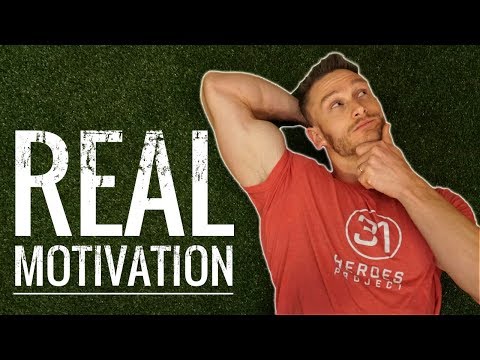
Please Subscribe for 3x Videos Per Week + Live Broadcasts
To learn more, visit my website here:
Get the Apparel I Wear at
Fitness Motivation | 3 Ways to Develop Lasting Workout Motivation | Visualization- Thomas DeLauer…
Why Visualization Works-
According to research using brain imagery, visualization works because neurons in our brains, those electrically excitable cells that transmit information, interpret imagery as equivalent to a real-life action. Basically, our brain can’t tell the difference between a real image and an imagined one. When we visualize an act, the brain generates an impulse that tells our neurons to “perform” the movement. This creates a new neural pathway – clusters of cells in our brain that work together to create memories or learned behaviors – that primes our body to act in a way consistent to what we imagined.
Study – Neuropsychologica-
30 young, healthy volunteers participated in the study:
– The first group (N = 8) was trained to perform “mental contractions” of little finger abduction (ABD)
– The second group (N = 8) performed mental contractions of elbow (ELB) flexion
– The third group (N = 8) was not trained but participated in all measurements and served as a control group
– Lastly, 6 volunteers performed training of physical maximal finger abductions. Training lasted for 12 weeks (15 min per day, 5 days per week)
At the end of training, researchers found that:
– The ABD group had increased their finger abduction strength by 35% and the ELB group augmented their elbow flexion strength by 13.5%
– The physical training group increased the finger abduction strength by 53%.
– The control group showed no significant changes in strength for either finger abduction or elbow flexion tasks
They concluded that the mental training employed by this study enhances the cortical output signal, which drives the muscles to a higher activation level and increases strength (2)
Ingestion Habits (Utilize Visual Cues)-
Visual cues are more or less visual triggers that remind you to perform the desired behavior – when motivation begins to subside, having a system in place is what helps you stick to your new habit is important.
Rhinal Cortex-
We have something called the rhinal cortex, which is critical for forming associations between visual stimuli and their motivational significance. Motivation is defined as the incentive to act and studies show that neurons in the ventral striatum are active in relation to the motivational significance of visual cues. So information about the identity of a stimulus must be translated into a signal about its motivational significance.
Ingestion Habit – Workout at the Same Time-
A new study published in Health Psychology provided a solution to staying motivated to go to the gym – working out at the same time every day. Researchers surveyed 123 students and faculty at the University of Iowa, asking questions about their exercise habits.They found that the most important thing for consistent workouts is what they call an “instigation habit” – stronger instigation habits successfully predicted long-term consistency in workouts
References:
1) Seeing Is Believing: The Power of Visualization. (2009, December 3). Retrieved from
2) Ranganathan VK , et al. (n.d.). From mental power to muscle power–gaining strength by using the mind. – PubMed – NCBI. Retrieved from
3) Enjoying your workout is the best motivation. (2016, November 1). Retrieved from
4) A Qualitative Analysis of Emotional Facilitators in Exercise. (n.d.). Retrieved from
5) PsycNET. (n.d.). Retrieved from
6) Science-Proven Fitness Motivation. (2018, May 21). Retrieved from
7) Liu Z , et al. (n.d.). Learning motivational significance of visual cues for reward schedules requires rhinal cortex. – PubMed – NCBI. Retrieved from
8) How to stick with good habits every day by using visual cues – The Monk Life. (2017, May 9). Retrieved from
9) Cue Workout Motivation With a Simple Trick. (2015, July 10). Retrieved from
10) The Power of Visual Cues. | Rebelle Society. (2016, October 5). Retrieved from
11) 7






